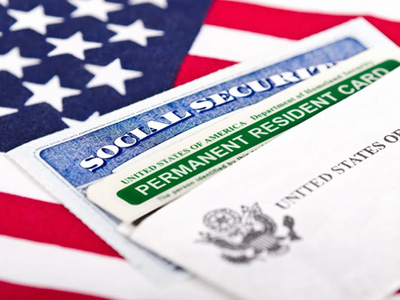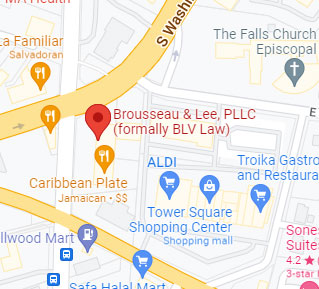 The General Process Of Filing For US Citizenship
The General Process Of Filing For US Citizenship
The General Process For Those Applying For Permanent Residency Through A U.S. Citizen Spouse
The general process of filing for lawful permanent residency after marrying a U.S. citizen is broken down into two areas:
1.) People who are already in the United States, whether lawfully or not.
2.) People that are petitioned for abroad.
If You Meet Someone Abroad And Want To Get Married…
If you meet a U.S. citizen who you want to marry in the United States, then the U.S. citizen needs to petition for you through what’s called a Form I-129F, otherwise known as a fiancé visa petition.
You’ll Have the Burden of Proof
Your burden of proof is to establish that you have the intent to marry in the United States within 90 days of your entry. We’ve all seen “90-day fiancé”. and the truth is, the show works this way because this is exactly what the law requires: for you to get married within 90 days of your admission to the U.S.
To prove this, you only need to have met in person one time, but you should still document the courtship. Such evidence may include:
- Correspondence between the couple,
- Pictures from when you met, and any other time spent together
- The story of “us,”
- “How you fell in love” statements from those who have witnessed the courtship (e.g., friends, family, etc.).
The fiancé petition process concludes with the intending immigrant attending an interview at the U.S. embassy. Upon issuance of the K-1 (i.e., fiancé) visa, and subsequent admission to the United States, you will then have 90 days to get married.
Then You’ll File an Application to Adjust Your Status
Once you’re married, you then must file the Form I-485, (application to adjust status). This application will lead to the issuance of your conditional green card.
If You Are Already in the United States…
- Individuals that entered the U.S. lawfully can typically adjust their status to that of a lawful permanent resident even if they overstayed their visa. To do this, you must submit a Form I-130 together with the Form I-485 after marrying a U.S. citizen.There are minimal exceptions to this, based on the type of visa used to enter the country. However, if you meet a U.S. citizen and marry them, you can typically adjust your status and get a conditional green card notwithstanding the overstay of that visa.
- Individuals that entered the U.S. unlawfully must also file an I-130 marriage petition after getting married. Upon approval, they would need to submit a Form I-601A, application for a provisional unlawful presence waiver; this excuses the illegal entry and accrued unlawful presence. Once the waiver granted, you can then depart from the U.S. without any immigration penalties attaching once you depart and complete consular processing at the U.S. Embassy or Consulate in your home country. This is where you obtain the marriage-based visa that was petitioned for with the Form I-130. After obtaining your visa, you complete a lawful entry into the United States and your conditional green card should arrive soon thereafter.
Once You’ve Obtained A Conditional Green Card, You’ll Seek To Remove The Conditions
In cases where the marriage between a conditional resident and the U.S. citizen spouse is still legally intact, the couple must jointly file a Form I-751 petition to remove the conditions initially placed on the non-citizen resident. In a joint filing, the I-751 is signed by both spouses.
One reason a joint I-751 is legally advantageous is because the burden of proof will be on USCIS to prove that the marriage is not bona fide. However, this is only true so long as the filing of the joint petition is timely and both spouses appear at an interview in the event one is scheduled.
The fact that USCIS has the burden of proof is important because, in the waiver context, the burden of proof is on the immigrant to establish the marriage was entered into in good faith. In the joint filing context, however, the burden of proof is on the government to show that the marriage was not entered into in good faith or is otherwise not bona fide.
With the guidance of a skilled attorney for Immigration Cases in Virginia, you can have the peace of mind that comes with knowing that we’ll make it look easy.
For more information on the General Process of Applying for Permanent Residency through a U.S. Citizen Spouse, an initial consultation is your next best step. Then, get the information and legal answers you seek by calling (703) 249-9055.

Call Now To Schedule A Consultation (703) 249-9055
